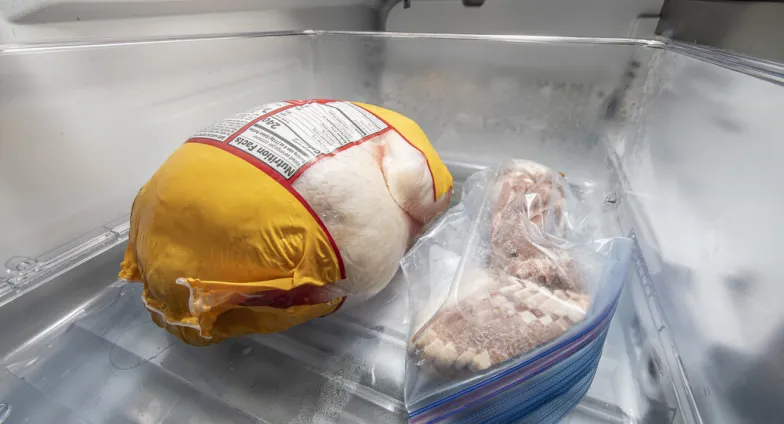Keep Foods Safe During a Power Outage
You need to keep food cold if you lose electrical power.
The No. 1 rule if the power goes out is to keep the fridge or freezer door closed to keep the cold air inside.
Food in most freezers will stay below 40 F up to three days if you keep the door closed, even in the summer.
If you think you might experience a power failure, set the refrigerator and freezer’s temperature to the coldest setting to build up a reserve of cooling. Covering the freezer with blankets, quilts, crumpled newspaper or excelsior will help keep the food frozen.
Once the power is out, cool hot foods before refrigerating or freezing them to hold down the temperature in the fridge or freezer.
How fast food will thaw in a power outage depends on the:
- Amount of food in the freezer: A full freezer stays cold longer than a partially full freezer.
- Kind of food in the freezer: A freezer filled with meat will stay cold longer than one filled with baked goods.
- Temperature of the food: The colder the food, the longer it will stay frozen.
- How the freezer was made: A well-insulated freezer will keep food frozen longer than one with little insulation.
- Size of the freezer: The larger the freezer, the longer the food stays frozen.
An option for keeping the food cold is using dry ice. You’ll need about 2 ½ to 3 pounds of dry ice per cubic foot of freezer space. That means a 50-pound block of dry ice should keep the food in a full 18-cubic-foot freezer safe for at least two days.
You’ll need more dry ice for an upright freezer than a chest-type model, and you should place ice on each shelf of the upright freezer. Your dry ice supplier may be able to cut blocks into slabs. If the freezer doesn’t have much food in it, you might be able to keep food frozen longer if you pack it tightly in coolers with dry ice.
Remember that dry ice is very cold - minus 216 F - so wear gloves or use tongs when handling it. Wrap the block of dry ice in brown paper so it will last longer, and use boards or heavy cardboard to separate it from direct contact with food.
If you have a partially empty freezer, you can fill it with crumpled newspaper or clean bath towels or blankets to reduce air circulation, which causes dry ice to dissipate.
Dry ice becomes a gas as it dissipates, so avoid gas fumes by standing back when opening the door of an upright freeze or waiting a few minutes after opening the door of a chest freezer before reaching inside.
If dry ice isn’t available, check with a friend, local dairy or cold-storage warehouse to see if you can store your food there temporarily.
Once your power is restored, you may be able to refreeze some foods if they still contain ice crystals or have remained at 40 F or below for no more than two days. Throw the food away if it is 50 F or above.
Foods that can’t be refrozen but are safe to use may be canned immediately.

